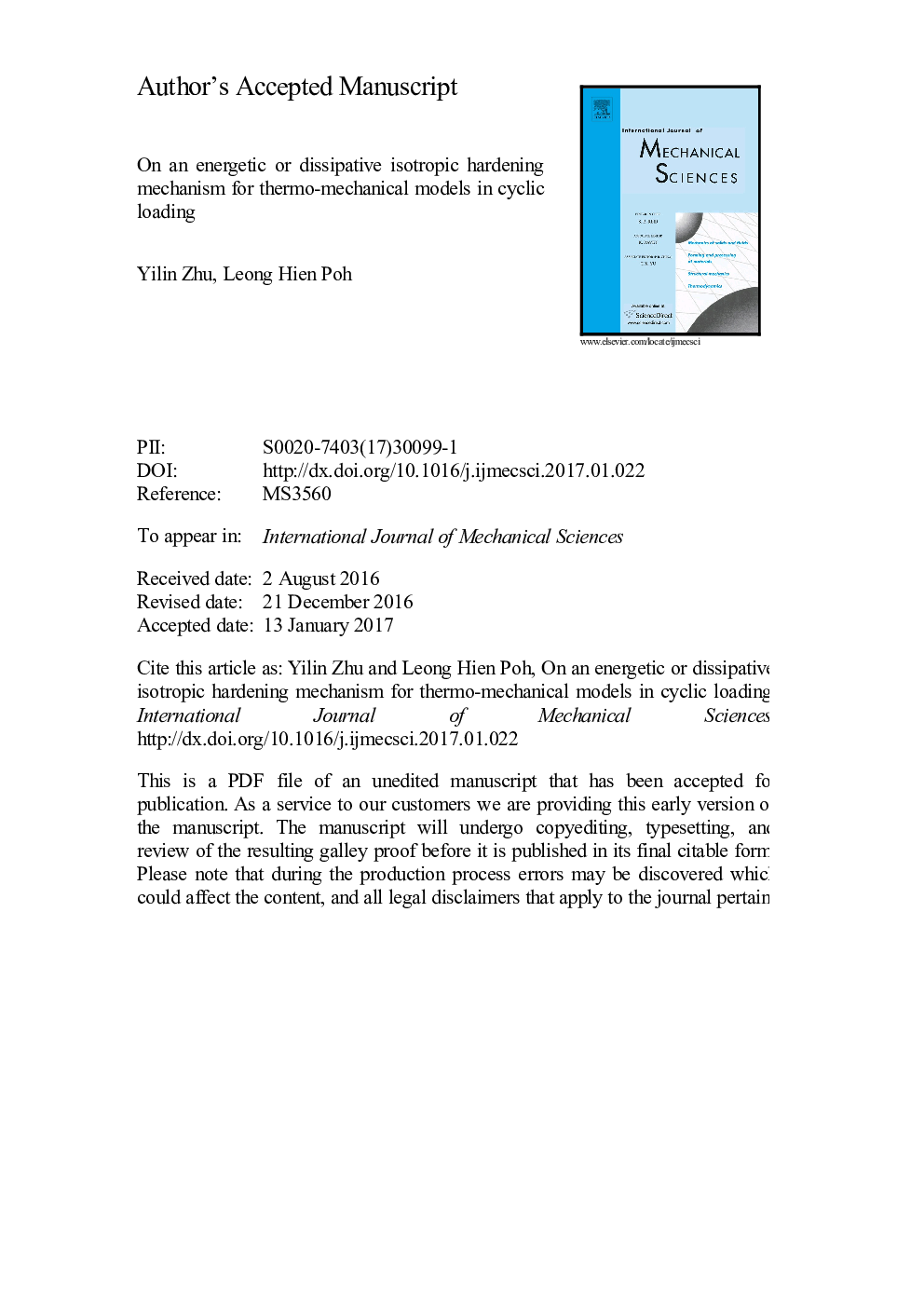| Article ID | Journal | Published Year | Pages | File Type |
|---|---|---|---|---|
| 5016089 | International Journal of Mechanical Sciences | 2017 | 39 Pages |
Abstract
In this paper, we compare and contrast the performance of two analogous thermo-mechanical models. The first reference model assumes an energetic isotropic hardening mechanism - the conventional approach in literature. Additionally, we consider an alternative formulation where isotropic hardening is strictly dissipative. Mechanically, both models are identical. The only difference lies in their respective heat conduction equations, where a heat source term associated with isotropic hardening manifests itself for the dissipative-based model. The predictions from the two models for different cyclic loading conditions are benchmarked against available experimental data for 316L stainless steel. While the energetic-based model is able to reasonably capture the material responses for simple load cases, its inadequacy for the more complex cases is easily observed. The superior performance of the dissipative-based model is furthermore demonstrated for a series of cyclic loading conditions. The results suggest that a dissipative isotropic hardening mechanism may be more appropriate for cyclic loadings.
Related Topics
Physical Sciences and Engineering
Engineering
Mechanical Engineering
Authors
Yilin Zhu, Leong Hien Poh,
